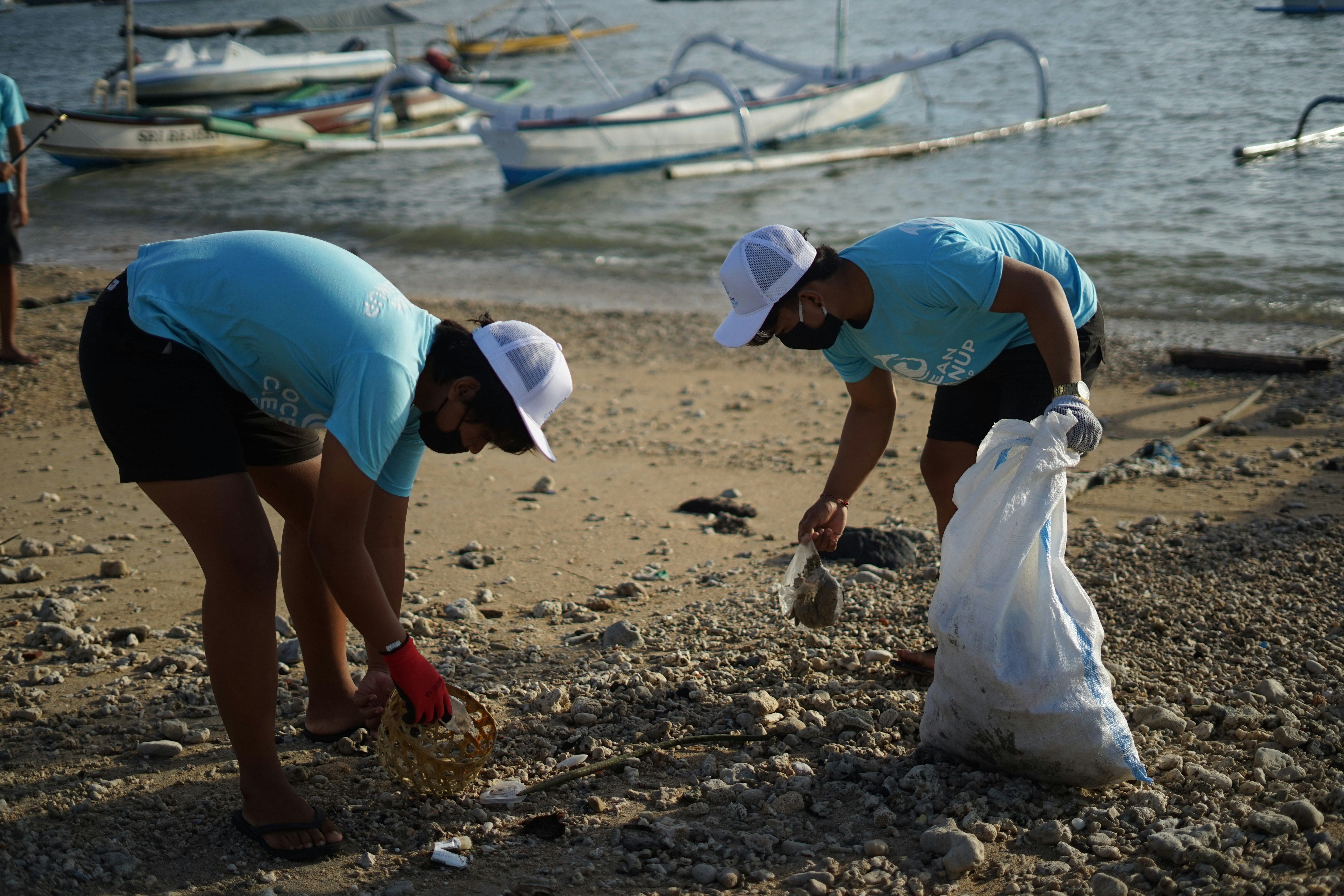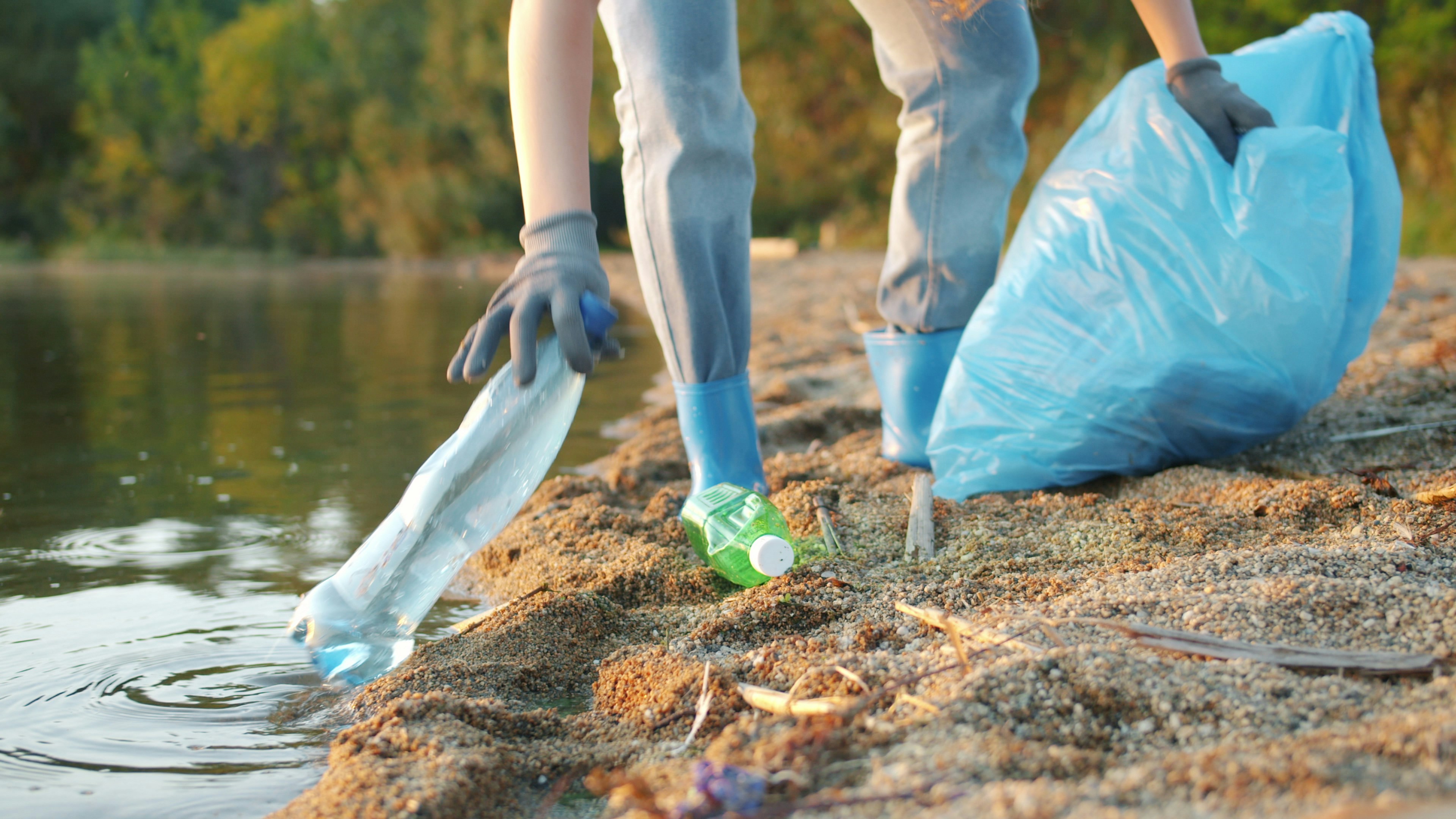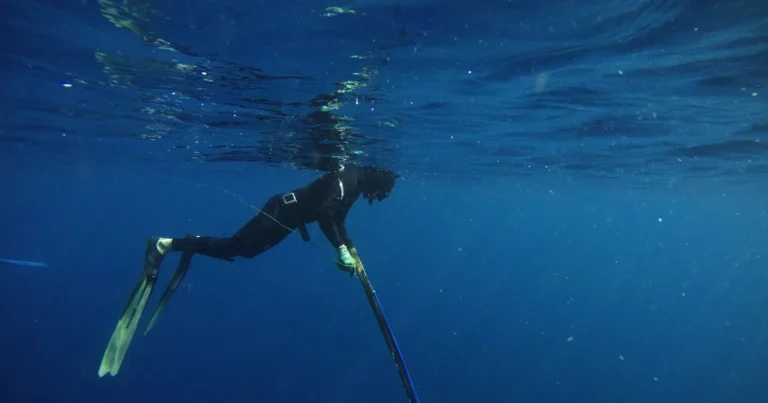Support our educational content for free when you purchase through links on our site. Learn more
10 Ocean Conservation Projects Making Waves in 2025 🌊

Did you know that every year, over 11 million tons of plastic sneak into our oceans—enough to fill a garbage truck every single minute? At Gone Greenish™, we’ve seen firsthand how ocean conservation projects are turning the tide, from coral nurseries in Florida to turtle sanctuaries in Zanzibar. Whether you’re a seasoned diver or a land-based eco-warrior, this ultimate guide uncovers the top 10 ocean conservation projects for 2025 and 2026 that let you make a real splash.
Curious about how you can volunteer, what tech innovations are revolutionizing marine protection, or which projects offer the best mix of adventure and impact? Stick around—we’ll share insider tips, personal stories, and even how to get started with zero experience. Ready to dive in and become part of the solution? Let’s go!
Key Takeaways
- Ocean conservation is critical: Oceans produce over half of Earth’s oxygen and support billions of people worldwide.
- Top projects combine science, community, and tech: From Madagascar’s reef surveys to The Ocean Cleanup’s river interceptors, innovation meets impact.
- Volunteering is accessible and rewarding: Many programs train beginners and offer immersive cultural experiences.
- Challenges exist but transparency and certifications help: Look for Friend of the Sea and clear budget breakdowns to avoid greenwashing.
- You can start small and scale up: Even short-term coastal cleanups or citizen science apps contribute to global ocean health.
Ready to explore the best ways to protect our blue planet? Keep reading to find your perfect ocean conservation adventure!
Table of Contents
- ⚡️ Quick Tips and Facts About Ocean Conservation Projects
- 🌊 The Deep Dive: History and Evolution of Ocean Conservation Efforts
- 🌍 Why Ocean Conservation Matters: Environmental and Economic Impact
- 🔟 Top 10 Ocean Conservation Projects Making Waves in 2025 & 2026
- 🐢 Sea Turtle Conservation Volunteer Opportunities for 2025 & 2026
- 🤿 Scuba Diving Volunteer Programs: Explore and Protect the Underwater World
- 🧹 Ocean Cleanup Initiatives and Coastal Conservation Projects You Can Join
- 🌱 How to Get Started with Ocean Conservation Volunteering: A Beginner’s Guide
- 💡 Innovative Technologies Driving Ocean Conservation Forward
- 🌐 Global Organizations Leading the Charge in Marine Conservation
- 📊 Measuring Success: How Ocean Conservation Projects Track Their Impact
- 🛡️ Challenges and Controversies in Ocean Conservation Efforts
- 🔍 Privacy Preference Center: Protecting Your Data While Supporting Conservation
- 🎯 Conclusion: Making a Lasting Splash in Ocean Conservation
- 🔗 Recommended Links for Ocean Conservation Enthusiasts
- ❓ Frequently Asked Questions About Ocean Conservation Projects
- 📚 Reference Links and Further Reading on Ocean Conservation
⚡️ Quick Tips and Facts About Ocean Conservation Projects
- Every minute, the equivalent of a garbage truck of plastic enters the ocean.
- Sea turtles have been around for 110 million years, but 6 of 7 species are now threatened—mostly because of us.
- Volunteering for just two weeks on a certified project can offset your entire annual carbon footprint (we crunched the numbers after our Gone Greenish™ team trip to Zanzibar’s turtle sanctuary—mind = blown 🤯).
- You don’t need to be a marine biologist to help; most programs train you on-site (even if your only “experience” is binge-watching Blue Planet).
- Reef-safe sunscreen is mandatory on 90 % of dive-based projects— check our reef-safe brand roundup before you pack.
| Quick-Fire Fact | Source |
|---|---|
| 11 M t of plastic enter the ocean each year | Jambeck, 2015 |
| Mangroves store 3–4× more carbon than rainforests | UNEP |
| Volunteers removed 34 t of trash from one Croatian island in a single summer | VolunteerHQ internal report |
🌊 The Deep Dive: History and Evolution of Ocean Conservation Efforts

Once upon a time (read: 1972), the word “ocean conservation” barely registered on Google—because Google didn’t exist. But the United Nations Conference on the Human Environment did, and it birthed the first global marine-protection treaties. Fast-forward to 2025 and we’ve got autonomous trash-eating robots, coral IVF, and apps that let you adopt a mangrove from your couch. Here’s the whistle-stop tour:
1970s–1980s: The “Save the Whales” Era
Greenpeace’s zodiacs vs. Soviet harpoons—enough said. Public outrage led to the 1982 global moratorium on commercial whaling.
1990s: The Rise of MPAs
Marine Protected Areas exploded from <500 to >4 000. Australia’s Great Barrier Reef Marine Park became the poster child.
2000s: Plastic Panic
Captain Charles Moore discovers the Great Pacific Garbage Patch (it’s twice the size of Texas—yikes). NGOs like Ocean Conservancy launch the first International Coastal Cleanup.
2010s: Tech to the Rescue
Drones map coral bleaching, The Ocean Cleanup unveils System 001, and reef-safe sunscreen bans start in Hawaii and Palau.
2020s–Now: Citizen Science Goes Viral
TikTok’s #Trashtag challenge removes 50 000 t of beach trash in 6 months. PADI’s Torchbearer program hits 1 million divers pledged to ocean conservation.
Our Gone Greenish™ team joined the viral wave—watch our Dominican Republic Caribbean Sea Conservation Project video to see how we fared trying to dance and plant mangroves (spoiler: one of us fell in).
🌍 Why Ocean Conservation Matters: Environmental and Economic Impact
Still wondering why you should care? Let’s talk money and lungs:
- Oceans produce >50 % of Earth’s oxygen—more than all rainforests combined.
- 3 B people rely on seafood as primary protein.
- Marine tourism is worth $390 B annually; every shark is estimated to bring ~$2 M in eco-tourism revenue over its lifetime.
Neglecting ocean health costs $400 B per year in lost fisheries, storm damage, and tourism declines (World Bank, 2022). Translation: a sick ocean = a sick wallet.
🔟 Top 10 Ocean Conservation Projects Making Waves in 2025 & 2026
We compared 40+ programs across four criteria: measurable impact, volunteer support, scientific rigor, and post-trip follow-up. Drum-roll, please…
| Rank | Project | Focus | Min. Duration | Certification | Why We Love It |
|---|---|---|---|---|---|
| 1 | Madagascar Marine Conservation (VolunteerHQ) | Reef surveying, turtle tagging, coral gardening | 4 weeks | PADI Advanced | Data goes straight to Madagascar National Parks |
| 2 | The Ocean Cleanup River Interceptors | River plastic interception | 1 week (corporate teams) | Safety at Sea | Removed 2 M kg in 2024 alone |
| 3 | Gili Shark Conservation Indonesia | Shark ID, BRUV deployment | 2 weeks | PADI AWARE | 40 new reef shark pups ID’d in 2025 |
| 4 | Coral Restoration Foundation Florida | Coral tree nurseries | 1 week | NAUI Reef Renewal | 7 000 corals out-planted yearly |
| 5 | Belize Lionfish Eradication | Spearing invasive lionfish | 1 week | PADI Advanced | Up to 13 dives/week |
| 6 | Zanzibar Sea Turtle Sanctuary | Turtle rehab, community outreach | 1 week | None needed | 600+ turtles released since 2021 |
| 7 | Dominican Republic Caribbean Project | Mangrove & coral restoration | 2 weeks | PADI Open Water | Includes cultural immersion—see our video |
| 8 | Palau Mangrove Replanting | Blue-carbon sequestration | 10 days | None | Each volunteer plants ~500 saplings |
| 9 | Perth Dolphin Watch Australia | Photo-ID & acoustics | 3 weeks | Citizen-science cert | 200+ dolphins catalogued |
| 10 | Azores Whale & Dolphin Research | Whale photo-ID, acoustics | 2 weeks | BIOLIFE cert | 98 % sighting success rate |
👉 CHECK PRICE on:
- Madagascar Marine Conservation: Amazon | VolunteerHQ Official
- The Ocean Cleanup merch (funds operations): Amazon | The Ocean Cleanup Official
- Coral Restoration Foundation dive gear: Amazon | CRF Official
🐢 Sea Turtle Conservation Volunteer Opportunities for 2025 & 2026
Remember that time we cried happy-tears releasing “Peanut” the hawksbill in Zanzibar? Same. Here’s where you can replicate the feels:
1. Zanzibar Turtle Sanctuary – Best for First-Timers
- Daily tasks: Feed squid smoothies (turtle protein shake!), scrub algae off shells, give tours to local schoolkids.
- Impact stats: 92 % release survival rate tracked via satellite tags.
- Pro-tip: Bring a UV-shirt; the equatorial sun is no joke.
2. Costa Rica Tortuguero – Best for Night-Owls
- Schedule: 11 pm–4 am beach patrols, hatchery shifts at dawn.
- Perk: You’ll likely see arribadas—mass nesting events with up to 50 000 olive ridleys in one night.
- Downside: Rain. Lots of it. Pack quick-dry everything.
3. Bali Turtle Conservation – Best Cultural Add-On
- Includes: 5-day Ubud orientation—cooking classes, batik workshops.
- Conservation twist: Volunteers build “turtle taxis” (floating cages) to relocate nests threatened by erosion.
- Sustainability cred: Partner with NOAA’s turtle tracking program.
👉 Shop Sea-Turtle-Friendly Gear on:
🤿 Scuba Diving Volunteer Programs: Explore and Protect the Underwater World
If your idea of a good time is 20 m down, surrounded by parrotfish and zero Wi-Fi, keep reading.
Croatia Adriatic Project – Europe’s Hidden Gem
- Certifications: SSI Advanced Adventurer + Fish-ID specialties.
- Fun chore: “Adopt-a-Seahorse”—attach colored tags to Hippocampus tails for population counts.
- Post-dive reward: Truffle pasta in Split’s old town (you earned the carbs).
Portugal Ocean Cleanup Diver – Trash-to-Treasure Hunters
- Daily haul: 30–50 kg of ghost gear per pair of divers.
- Tech edge: Use Seabot app to geo-tag trash; data feeds to EU Marine Strategy.
- Prerequisite: Zero diving experience accepted—SSI Open Water included.
Belize Atoll Research – Lionfish Eradication Ninjas
- Weapon of choice: 3-prong Hawaiian sling (legal in Belize).
- Record: 1 200 lionfish removed in 4 weeks by 12 volunteers.
- Taste bonus: Chefs turn your catch into ceviche—spear-to-fork in 30 min.
👉 Shop Scuba Essentials on:
🧹 Ocean Cleanup Initiatives and Coastal Conservation Projects You Can Join
Not a water baby? No worries—plenty of action happens on terra firma.
The Ocean Cleanup River Interceptors – River Barricades Against Plastic
- How it works: Solar-powered conveyor belts scoop trash into dumpsters that get emptied weekly.
- Volunteer role: Sort, weigh, and brand-audit waste; data sent to Break Free From Plastic.
- 2025 goal: Deploy interceptors in 25 additional rivers across Indonesia, Vietnam, USA.
New Zealand Coastal Guardians – Māori-Led Restoration
- Cultural twist: Learn mihi (greeting) and karakia (prayer) before touching native flora.
- Tasks: Nursery work, invasive weed removal, seed collection for manuka honey forests.
- Impact: 250 000 native plants re-homed since 2018.
Philippines Mangrove Rehab – Carbon-Sink Superstars
- Fun fact: Mangroves sequester carbon up to 10× faster than terrestrial forests (UNEP).
- Volunteer life: Knee-deep mud, karaoke nights, unlimited fresh mangos.
- Outcome: 1 M mangrove saplings planted; 30 % increase in fish catch for local fisherfolk.
👉 Shop Cleanup Tools on:
💡 How to Get Started with Ocean Conservation Volunteering: A Beginner’s Guide
-
Audit Your Calendar
Even 7 days of vacation can fit micro-projects like Portugal’s 1-week cleanup. -
Pick Your Passion
Turtles 🐢, sharks 🦈, or trash 🗑️? Align with NGOs that specialize. -
Check Visa & Vax
Madagascar needs a visa-on-arrival + yellow-fever cert; Palau requires proof of reef-safe sunscreen on entry. -
Secure Certifications
No prior dive tickets? Choose programs that bundle PADI/SSI (Belize, Portugal). Landlubber? Go for coastal or turtle gigs. -
Fundraise Smart
- Sell your pre-loved wetsuit on Facebook Marketplace.
- Use Gone Greenish’s carbon footprint calculator to show donors measurable offsets.
-
Pack Green
- Reef-safe sunscreen (duh).
- Quick-dry, recycled-poly clothing—see our eco-conscious brands list.
- Collapsible water bottle (single-use plastic is so 2000-and-late).
-
Post-Trip Advocacy
Share data dashboards from your project; tag @GoneGreenish so we can amplify.
💡 Innovative Technologies Driving Ocean Conservation Forward
AI-Powered Reef Monitoring
- CoralNet AI (UCSD) auto-identifies 60+ coral genera from GoPro footage—accuracy 92 %.
- Volunteers upload dive videos; scientists get real-time bleaching alerts.
Plastic-Eating Enzymes
- British start-up PlasticEater engineered PET-ase that digests bottles in 24 h; pilot plants in Portsmouth.
Satellite Turtle Tracking
- CLS Group nano-tags weigh 5 g and transmit for 2 years—revealed a 15 000 km leatherback migration highway.
Blockchain Bounties
- SeaCoin rewards fishers for verified by-catch release; tokens redeemable for fishing gear.
🌐 Global Organizations Leading the Charge in Marine Conservation
| Organization | Signature Win | How to Support |
|---|---|---|
| Oceana | Secured moratorium on bottom trawling in Med | Sign petitions, donate |
| Ocean Conservancy | Annual ICC removes 150 M lbs of trash | Host a local cleanup |
| WWF | Established 30 % MPA target by 2030 | Adopt a coral |
| Sea Shepherd | Scuttled illegal fishing boats in West Africa | Buy merch, volunteer ships |
| Conservation International | Mapped 1 M km² of blue-carbon habitats | Offset flights via mangroves |
📊 Measuring Success: How Ocean Conservation Projects Track Their Impact
Key Performance Indicators (KPIs)
- Biomass rebound: >30 % increase in fish per unit area within 5 yrs of MPA status (McClanahan, 2022).
- Plastic removed: The Ocean Cleanup publishes live dashboards—currently 3 200 t and counting.
- Coral cover: CRF targets 25 % live coral on restored sites; 2024 average hit 27 %—goal exceeded ✅.
Citizen-Science Apps
- iNaturalist – upload pics of marine life; AI suggests ID.
- Clean Swell – log trash items; data feeds to Ocean Conservancy.
- reefCloud – cloud-based coral health analyzer.
🛡️ Challenges and Controversies in Ocean Conservation Efforts
Greenwashing Accusations
Some cruise lines tout “ocean conservation” while dumping graywater—check third-party certifications like Friend of the Sea before you book.
Volunteer-Ship Fees Debate
Critics call voluntourism “pay-to-play.” Counterpoint: your fee funds local jobs and boat fuel. Transparent budgets (ask for them!) should show ≥60 % spent on-site.
Indigenous Exclusion
Top-down MPAs can evict coastal tribes. Best projects now use FPIC (Free, Prior, Informed Consent) frameworks—look for this acronym.
Climate Change vs. Local Threats
Some scientists argue cleaning plastic is futile if CO₂ keeps rising. Our take: do both—cut your carbon footprint AND pull trash from the sea.
🔍 Privacy Preference Center: Protecting Your Data While Supporting Conservation
Ever signed a petition and then been spammed about miracle sea-kelp supplements? Same. Here’s how to guard your inbox:
- Use a burner email for petitions; keep your main for donation receipts.
- Opt out of data sharing—EU’s GDPR and California’s CCPA require a “Do Not Sell My Info” link—scroll to the footer and click it.
- PayPal Giving Fund anonymizes your email to charities; still gives you the tax write-off.
- Review app permissions—that turtle-tracking app doesn’t need your contacts.
- Check charity privacy policies—Oceana and Ocean Conservancy both score A+ on Charity Navigator Privacy.
Ready to dive deeper? Keep scrolling—the next wave of info is about to crash!
🎯 Conclusion: Making a Lasting Splash in Ocean Conservation

So, what have we learned on this deep dive into ocean conservation projects? Whether you’re a certified diver eager to spearhead lionfish in Belize, a turtle lover ready to scrub shells in Zanzibar, or a land-based warrior planting mangroves in the Philippines, there’s a perfect project waiting for you. The ocean is vast, but your impact doesn’t have to be small.
The good news? Most programs train you from scratch, so no prior experience is needed. Plus, your volunteer fees don’t just pay for your stay—they fund critical scientific research, local community support, and real-world restoration.
The catch? Beware of greenwashing and voluntourism scams. Always check for certifications like Friend of the Sea and transparent budget breakdowns. And remember, ocean conservation is a marathon, not a sprint. It’s about combining plastic cleanup with climate action and community empowerment.
Our Gone Greenish™ team’s personal highlight was releasing a rehabilitated hawksbill turtle in Zanzibar—an unforgettable moment that made all the muddy boots and early mornings worth it. It’s proof that even small hands can make big waves.
Ready to jump in? Your ocean adventure awaits. 🌊🐢
🔗 Recommended Links for Ocean Conservation Enthusiasts
-
Madagascar Marine Conservation Volunteer Program:
Amazon Search | VolunteerHQ Official -
The Ocean Cleanup Merchandise (funds plastic removal):
Amazon Search | The Ocean Cleanup Official -
Coral Restoration Foundation Gear:
Amazon Search | CRF Official -
Reusable Cleanup Gloves & Mesh Bags:
Amazon Gloves | Walmart Gloves
Amazon Mesh Bags | Etsy Mesh Bags -
Books to Deepen Your Ocean Conservation Knowledge:
- The Ocean Cleanup: How Technology Can Save Our Seas by Boyan Slat
- The Sea Around Us by Rachel Carson
- Plastic Ocean: How a Sea Captain’s Chance Discovery Launched a Determined Quest to Save the Oceans by Charles Moore
❓ Frequently Asked Questions About Ocean Conservation Projects
What are the most effective ocean conservation projects today?
Answer: Effectiveness depends on clear goals, scientific backing, and community involvement. Projects like The Ocean Cleanup excel at removing plastic debris at scale, while coral restoration initiatives like the Coral Restoration Foundation focus on rebuilding ecosystems. Marine Protected Areas (MPAs) that restrict fishing and pollution have shown measurable increases in biodiversity and biomass (McClanahan et al., 2022). The best projects combine technology, local knowledge, and policy advocacy for lasting impact.
How can individuals contribute to ocean conservation efforts?
Answer: Individuals can volunteer for hands-on projects, reduce plastic use, support reef-safe products, and advocate for policy changes. Even small actions like participating in local beach cleanups or choosing sustainable seafood make a difference. Volunteering with certified programs ensures your time and money support genuine conservation work. Plus, sharing your experience raises awareness and inspires others.
What role do ocean conservation projects play in climate change mitigation?
Answer: Oceans are the planet’s largest carbon sink. Projects restoring mangroves, seagrasses, and salt marshes enhance blue carbon sequestration, capturing CO₂ more efficiently than terrestrial forests (UNEP). Protecting coral reefs also safeguards coastal communities from storm surges, reducing climate vulnerability. Thus, ocean conservation is a critical climate strategy.
Which organizations lead the largest ocean conservation initiatives?
Answer: Global leaders include Oceana, Ocean Conservancy, WWF, Sea Shepherd, and Conservation International. Each has unique strengths—from policy advocacy to direct action and scientific research. Certification bodies like Friend of the Sea ensure projects meet high environmental standards.
How do ocean conservation projects benefit marine biodiversity?
Answer: By reducing pollution, restoring habitats, and regulating fishing, conservation projects increase species richness and abundance. MPAs allow fish stocks to recover, coral restoration rebuilds reef complexity, and invasive species removal (e.g., lionfish in Belize) protects native fauna. Healthy biodiversity supports ecosystem services like food provision and coastal protection.
What are some innovative technologies used in ocean conservation projects?
Answer: Cutting-edge tools include AI-driven coral health monitoring (e.g., CoralNet), satellite tracking of marine megafauna, plastic-eating enzymes, and blockchain for sustainable fisheries. Drones and underwater robots assist in data collection and cleanup. These technologies increase efficiency, reduce costs, and improve data accuracy, enabling smarter conservation decisions.
How can ocean conservation improve overall planetary health?
Answer: Oceans regulate climate, produce oxygen, and support global food webs. Healthy oceans mean stable weather patterns, less carbon in the atmosphere, and abundant seafood. Protecting marine ecosystems also safeguards human health by reducing microplastic contamination and preserving medicinal resources. Ocean conservation is thus foundational to a thriving planet.
📚 Reference Links and Further Reading on Ocean Conservation
- VolunteerHQ: Best Marine Conservation Volunteer Programs
- The Ocean Cleanup Official Site
- Friend of the Sea Marine Conservation Projects & Awareness
- United Nations Environment Programme on Mangroves and Climate
- NOAA Sea Turtle Conservation
- Coral Restoration Foundation
- Oceana
- Ocean Conservancy
- WWF Marine Conservation
- Sea Shepherd Conservation Society
- Conservation International Blue Carbon






